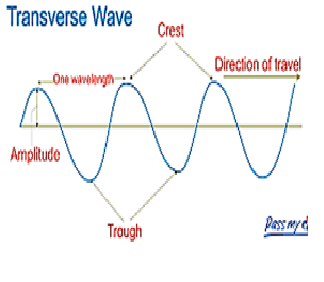

Waves are
divided into……types with respect to their nature?
a) two
b) three
c) four
d) six
Explanation:1. Transverse waves and
2. Longitudinal waves
Transverse Waves:
A transverse wave is a wave whose oscillations are
perpendicular to the direction of the wave's advance. This is in contrast to a
longitudinal wave which travels in the direction of its oscillations. Water
waves are an example of transverse wave.
The waves in
which the particles of the medium vibrate……..to the direction of wave travel is
called transverse waves?
a) parallel
b) below
c) perpendicular
d) above
Which type of waves is/are produced in rope?
a) electromagnetic
b) transverse
c) longitudinal
d) all of these
Which of the following position is the crest of transverse waves?
a) parallel to the mean position
b) above the mean position
c) below the mean position
d) all of these
Transverse waves travel in the form of……..
a) compression and rarefaction
b) compression only
c) crest and trough
d) rarefaction only
Explanation:A crest point on a wave is the maximum value of upward displacement within a cycle. A crest is a point on a surface wave where the displacement of the medium is at a maximum. A trough is the opposite of a crest, so the minimum or lowest point in a cycle.
